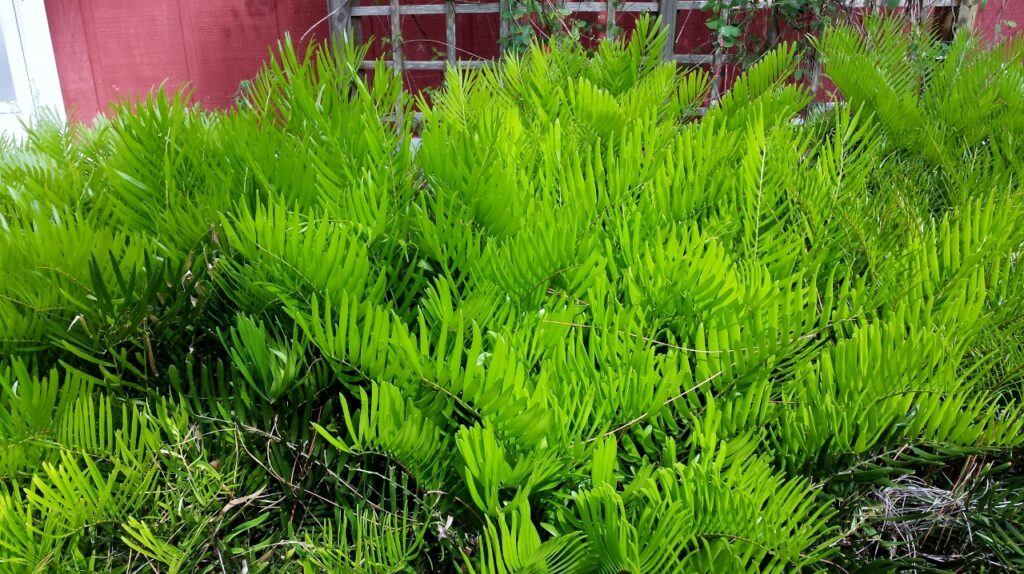
Coontie
Zamia integrifolia
Coontie is one of our most drought tolerant groundcovers. It takes only a few weeks of watering to become fully established. The thick, water storing tap root goes down deep to find moisture.
It is tolerant of salt air, yet not much salt or fresh water flooding, and prefers full sun to partial shade. A freeze may kill the plant, which is why it only ventures to the Georgia border. Zamia pumila is a catch all for all the native species of cycad in Florida. I am a splitter, so please see this interesting description, click Here.
The starch containing root was once pulverized, then washed and fermented several times to break down the hydrocyanic acid that it contains.
It was a major source of starch for the Native Americans and early settlers. See this article for more information click Here.
Coontie can be found in the Everglades Rocklands, coastal hammocks and some scrub or scrubby pine habitat. I have seen it occur naturally on the dune in Vero Beach, The Pine Rocklands of Dade County, the scrub trail at Wekiva Springs State Park and the Rafael Sanchez Trail in Martin County.
On this trail it appears under a large old Live Oak. These were small coontie and I have a feeling that the mother plants were placed there by native Americans or settlers… Just a hunch.
Coontie needs a fertile, deep, dry soil. It will not take flooding for long before rotting into mush. New growth comes in May and June which is also when the atala hairstreak butterfly lays its eggs.
If you have this butterfly, you may want to manage the caterpillar population by removing all but a few from each plant. Since this plant only sends up new leaves once a year, it can look pretty raggedy when over grazed by caterpillars.
Male and female plants are separate and should be planted about three feet apart if you want pollination and viable seed. The male cones are six inches long and one inch wide while the female cones are up to eight inches long and three inches wide. Two beetle species pollinate the female cone. This is an ancient plant preceding bee pollinators.
The female cones break apart revealing the orange pulp, which covers each single seed, between September and November. The orange pulp is hard to remove, yet the fruit can be dried and planted an inch deep where you want it to grow.
The pulp will rot away naturally. Germination may take six months and is initiated by the summer rains. Do not water the planted seed, let the rains do it for you.
The orange pulp around each seed looks like candy, so if you have small children remove the female cones before they ripen around September. The taste is bitter though.
Bluejays and mockingbirds eat the seed covering while squirrels eat the covering and seed meat. All will spread a few seed across your and your neighbors’ properties. Do not eat the seed!
Plant in small groupings or large masses. This is a plant that will live for decades and become rather wide as it sprouts pups off the main root. Space at least 2.5 feet to three feet apart and back from walkways.
A natural combination is Pine Trees with Saw Palmetto, Coontie, Little Bluestem Grass, Silver Palm, Chapman’s Cassia, Tetrazygia, Marlberry, Myrsine, Randia, Wild Coffee, Lopsided Indian grass and other Pine Rockland species.
A coastal combination is Horizontal Cocoplum, Spider Lily, Dune Sunflower, Beach Verbena, Bay Cedar, Sea Lavender, Red Salvia, Spotted Beebalm and other dune plants. Just give it some light, although it can tolerate growing under open shrubs.
Here is another article you may like, click Here.